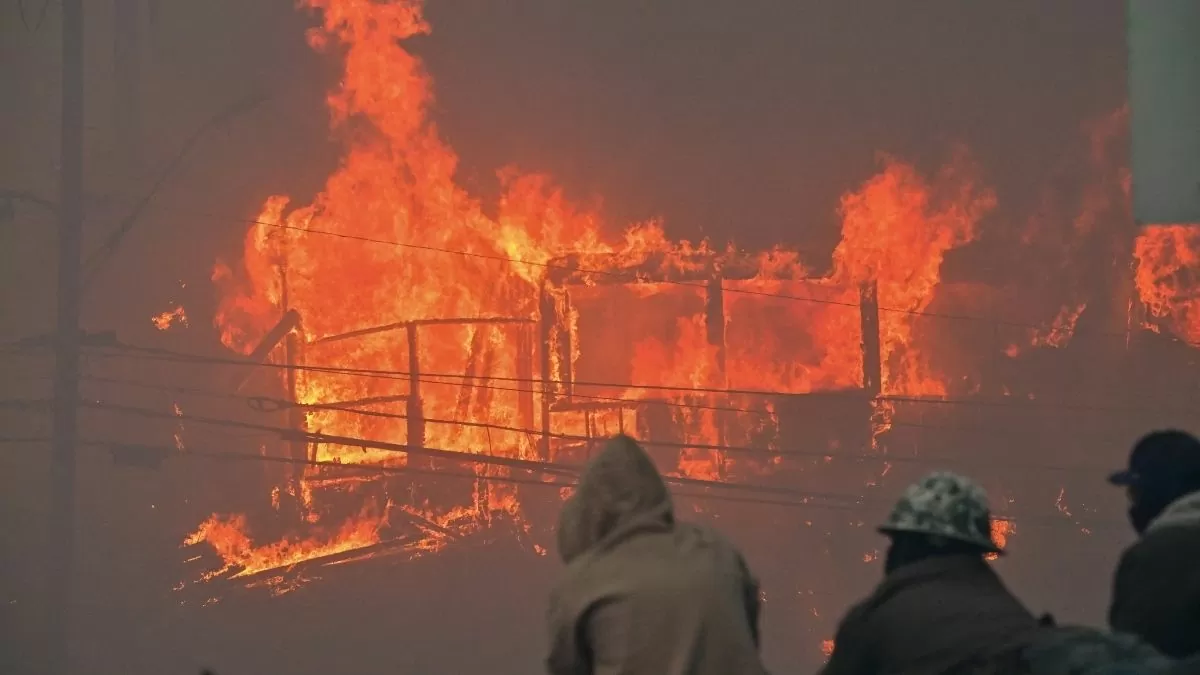Palisades Fire Forces Mass Evacuations in Los Angeles
The Palisades Fire, a rapidly spreading wind-driven wildfire, has upended the lives of more than 30,000 residents in the Los Angeles area. The blaze, igniting around 10:30 a.m. on Tuesday near North Piedra Morada Drive, grew aggressively throughout the day, fueled by powerful Santa Ana winds. By mid-afternoon, the fire had scorched over 2,900 acres and continued to advance, prompting widespread evacuations.
Palisades Fire: Mass Evacuations in Pacific
Evacuation orders covered the entire Pacific Palisades community down to the Pacific Ocean. More than 10,000 homes in Pacific Palisades and Malibu were directly affected. Authorities urged residents to evacuate south via Palisades Drive and Sunset Boulevard. An emergency shelter was established at the Westwood Recreation Center to accommodate evacuees and small animals, providing a safe haven as conditions worsened.
At a press briefing, Gov. Gavin Newsom referred to the wildfire as a “hell of a way to start the New Year,” underscoring the urgency of the situation. Public safety officials reinforced calls for residents to cooperate with evacuation directives and minimize roadway congestion to aid emergency operations.

Firefighting Efforts Underway
Hundreds of firefighters from across the region have been mobilized to combat the flames. Supporting efforts include over 100 officers from the Los Angeles Police Department, tasked with managing traffic, controlling evacuations, and ensuring emergency vehicle access. LAPD Chief Jim McDonnell emphasized the critical need for clear streets to enable resource deployment.
City Council President Marqueece Harris-Dawson urged residents to stay alert and off the roads, even in areas not directly affected, as the unpredictable and intense Santa Ana winds are expected to worsen.
Palisades Fire: Impact on Homes and Environment
Though the exact number of structures damaged or destroyed remains unclear, local news coverage has revealed heartbreaking images of several homes engulfed in flames. The inferno adds to the growing concerns about wildfire resilience in California, as regions like Malibu have previously endured similar disasters, such as the 2022 Franklin Fire that burned 4,000 acres.
Uncertain Causes and Similar Conditions
The origins of the Palisades Fire are still under investigation. Its rapid progression, however, highlights the familiar and devastating role of seasonal winds in California’s wildfire outbreaks. Pacific Palisades, just 10 miles from Malibu, demonstrates how these conditions repeatedly endanger communities in high-risk areas.

Staying Prepared
As the Palisades Fire unfolds, authorities are urging residents to stay informed about evacuation orders and prioritize safety. Those spared from immediate danger are reminded to secure loose outdoor objects that could become hazards under high winds. Public compliance with these measures remains pivotal in ensuring swift emergency response and reducing risks to both human life and property.
What Are Santa Ana Winds?
Santa Ana winds are dry, warm, and gusty winds that blow from the interior regions of Southern California toward the coast. They oppose the usual onshore breeze, which typically brings moist air from the Pacific Ocean inland.
Formation Process
These winds form when high pressure develops over the Great Basin, a vast desert area in the western U.S. As the air sinks, it loses moisture and flows in a clockwise direction toward Southern California. To reach the coastal areas, the air travels through mountain passes and canyons, accelerating and warming as it descends.
Impact on Wildfires
The low humidity accompanying Santa Ana winds causes vegetation to dry out, creating perfect conditions for wildfires. High wind speeds can rapidly spread fires from small sparks, leading to some of the worst wildfire disasters in Southern California’s history.
Origins of the Name
The winds likely derive their name from Santa Ana Canyon in Orange County. Alternative theories exist, and they are sometimes referred to as “devil winds” due to their destructive nature.

Effects on People
Santa Ana winds may help remove urban smog, definitely visibility, but the consequences of this are dry skin, lips, and nasal passages. People often describe these winds as unsettling. Raymond Chandler vividly portrayed their emotional impact in his story Red Wind, writing, “It was a wind out of the desert that night, … creating the feeling in one’s nerves and skin.”
These seasonal winds although an imperative part of the climate of the region signify the profound duality of Mother Nature and her work; beautiful yet deadly.








